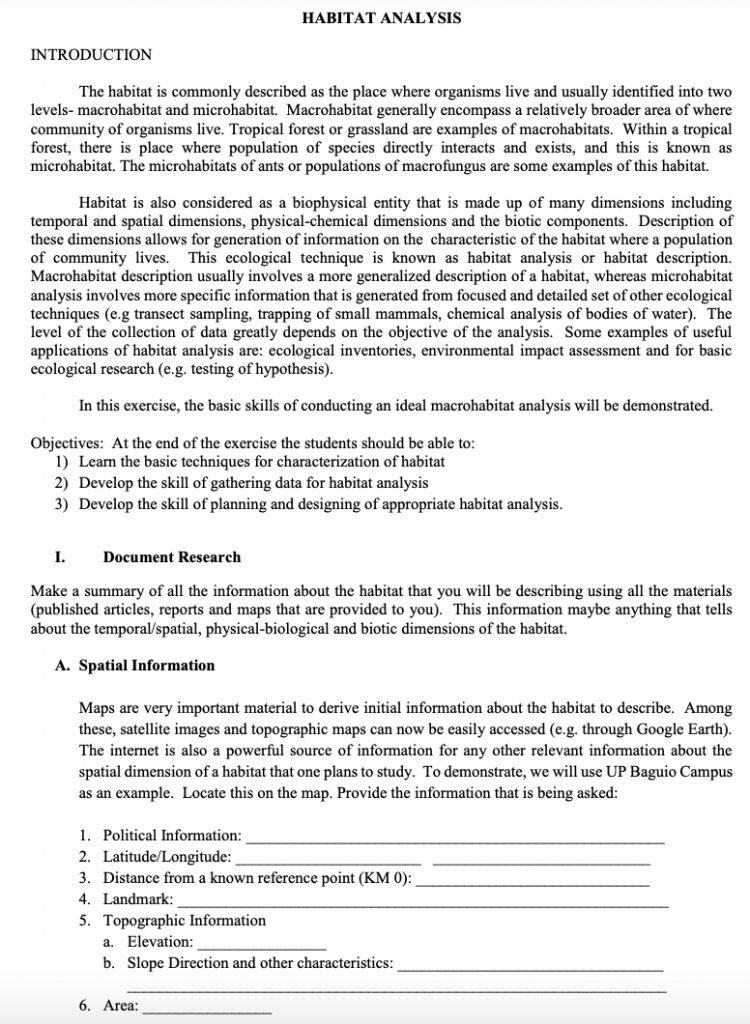Bio 160 on Macrohabitat and Microhabitat
Summary:
Habitat analysis involves the study of the macrohabitat and microhabitat where organisms live. It includes the examination of various dimensions such as spatial, temporal, physical-chemical, and biotic components. The analysis can be used for ecological inventories, environmental impact assessments, and basic ecological research. The exercise focuses on conducting a macrohabitat analysis and aims to teach students basic techniques for characterizing a habitat, gathering data, and planning appropriate analysis.
The document research phase involves summarizing information about the habitat using published articles, reports, and maps. Spatial information is obtained from maps, including political information, latitude/longitude, distance from a reference point, landmark, elevation, slope direction, and area. Physical information includes soil type and characteristics, water bodies and their characteristics, atmosphere/climate, and man-made features. Biotic components encompass animals, plants, and other relevant organisms.
The field data section provides detailed descriptions of obtaining data during field activities. The data summary combines the information from document research and fieldwork, encouraging data comparison among different groups.
The second part of the text focuses on the ecosystem, edaphic (soil-related), and climatic factors. It explains the autotroph-heterotroph-decomposer classification and the production-consumption-decomposition concept for describing ecological structure and function. The biotic components include producers, consumers, and decomposers, while the abiotic components consist of climatic factors (light, temperature, humidity, wind), edaphic factors (soil properties), and topographic factors (aspect, slope, altitude).
The climatic factors section emphasizes the interplay between various elements, such as temperature, light intensity, relative humidity, wind speed and direction, atmospheric pressure, precipitation, and evaporation rate. The procedures involve using field instruments to measure these elements at specific sites.
Excerpt:
Bio 160 on Macrohabitat and Microhabitat
HABITAT ANALYSIS INTRODUCTION
The habitat is commonly described as the place where organisms live and is usually identified into two levels- macrohabitat and microhabitat. Macrohabitat generally encompass a relatively broader area where a community of organisms live. Tropical forests or grassland are examples of microhabitats. Within a tropical forest, there is a place where a population of species directly interacts and exists, and this is known as a microhabitat. The microhabitats of ants or populations of macrofungus are some examples of this habitat.


Reviews